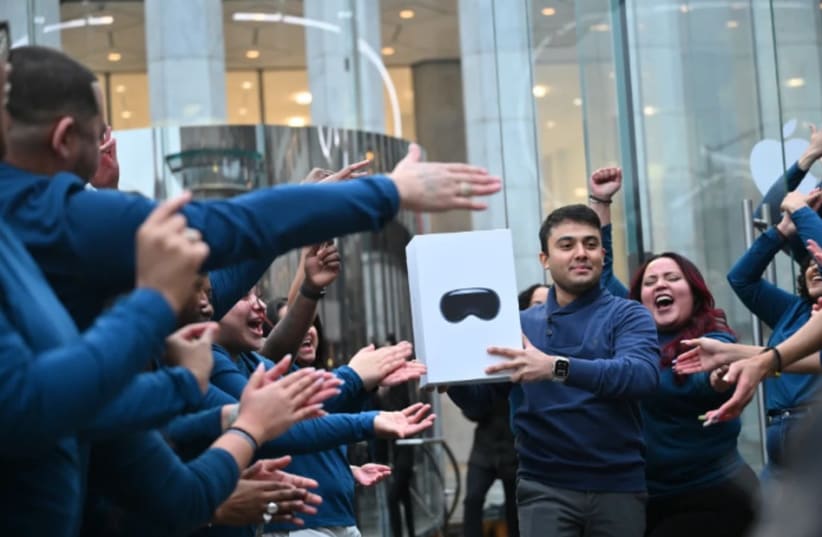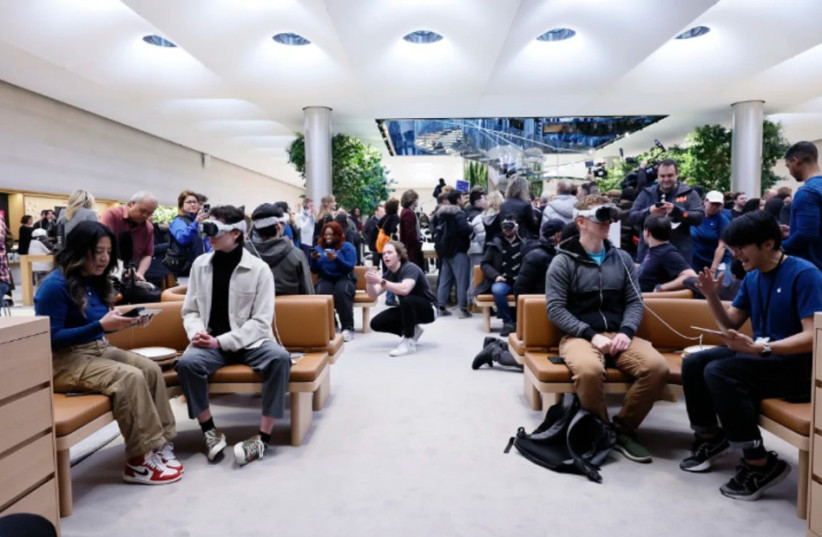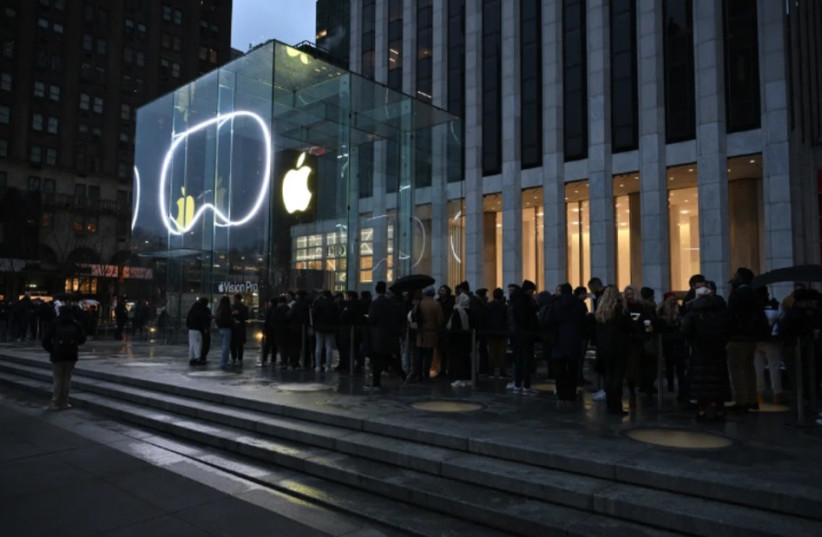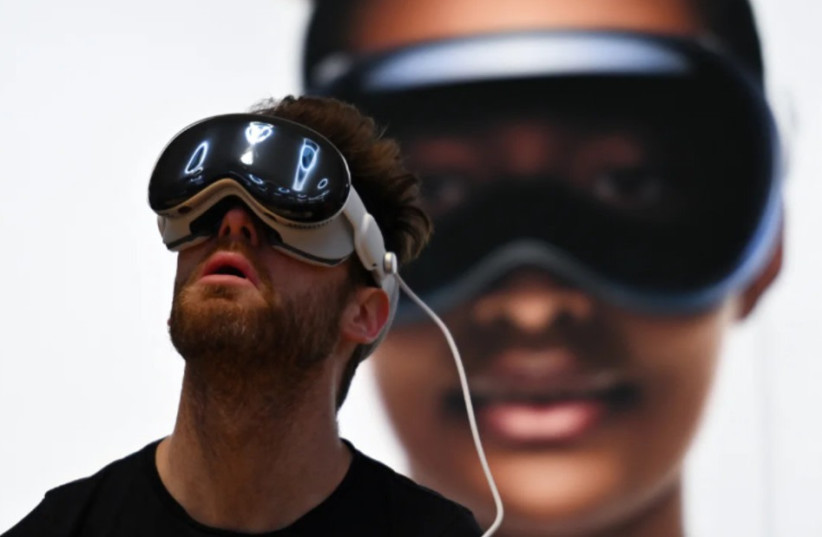The frenzy for Apple's round virtual reality glasses is underway: within just 10 days, Apple sold 200,000 units through pre-orders on their website. This morning, the official sale opened in Apple stores, and despite the cold of the peak winter in the US, giant lines formed reminiscent of previous company launches.
Earlier, Apple CEO Tim Cook was seen arriving at the flagship Apple store in New York, with a giant neon symbol of the round virtual reality goggles adorning the Apple logo. When asked by reporters about the heavy price tag of the new glasses, which retail for $3,500 for the cheaper model, he said that, in the company's opinion, the price matches the value and capabilities of the device.
HURRAH FOR THE FIRST PERSON TO SPEND $3.5K ON APPLE VISION PRO WHO JUST WALKED OUT OF THE STORE/end sarcasm pic.twitter.com/hfZwkRtxDW
— Mario Nawfal (@MarioNawfal) February 2, 2024
This was likely Apple's most expensive development: the Vision Pro glasses combine augmented reality, in which the user is embedded in their surroundings, and virtual reality. It took the company years of research and building special components. But the result seems nothing short of astonishing in this recent launch. The round virtual reality glasses are like a spatial computer that integrates the digital world with the real world. The glasses detect movement, track eye movements, identify speech, and provide endless interactions in the digital world immersed within the round world.
The device operates on a new interface called visionOS, similar to an updated version of iOS, designed for the world of augmented reality glasses. The glasses feature a 3D glass display, an aluminum frame, and an adjustable headband. The frame includes five sensors, six microphones, and 12 cameras. The user looks at micro-OLED displays measuring 1.41 inches (3.6 cm).
These displays can turn any space into a personal cinema hall with a huge screen simulating a width of 30 meters in 4K quality, alongside advanced spatial audio. Apple has also integrated its movie and TV show app, and is likely to include additional apps such as Netflix, Disney Plus, and other streaming services.
The glasses allow the use of apps that extend beyond the display boundaries, so users can change their position or have them respond to lighting conditions. Users can access their iCloud photo library and view photos and videos in their original size. Panoramic photos taken on an iPhone expand and surround the users, creating the feeling that they are exactly in the place where the photo was taken.
Video chat calls also become spatial: video chat conversations take advantage of the space surrounding the user, creating the feeling that the person they are talking to is close to them. The glasses also include thousands of apps, both those familiar from the iPhone and unique ones developed for the augmented reality glasses.
But glasses have a number of drawbacks. The main one is the high price: the cheaper model with 256GB storage will cost $3,499, while the more expensive model with 1TB storage will reach $4,000. That's not the end of this not-so-cheap deal: Apple Care service costs will cause you to say goodbye to an additional $500 from your wallet. Various add-ons like a case or protective cover will cost you several tens of dollars more. For prescription lenses, it will cost even more: Apple announced that it will launch unique vision lenses from the German optics giant Zeiss that magnetically attach to the device. The price of the lenses for nearsightedness and farsightedness will range from $99 to $199 depending on the number of lenses.
The second problem that Apple has not been able to solve is the weight: testers have already reported that the glasses are too heavy. Their weight ranges from about 600 to 650 grams, which has led to complaints of neck pain, preventing users from wearing them for more than a few consecutive minutes. Added to this weight is the battery that connects to the glasses via a USBC cable, weighing 353 grams. All this weight together adds up to over 900 grams that the user needs to carry on their body. Analysts believe that the weight issue will be one of the first ones that Apple will need to solve towards the development of the second generation of the glasses.
Apple's virtual reality glasses will compete against Meta's Quest 3 glasses, which were launched a year ago. The capabilities of Apple's glasses surpass those of Meta, which has made many improvements since the initial version of the "Oculus Quest." However, the price of the Quest is only $500, a much more reasonable price for most consumers. Samsung is also expected to launch its own virtual reality glasses, developed in collaboration with Google and Qualcomm. Despite the drawbacks of Apple's initial version of the glasses, analysts believe that the high price and even the weight will not deter enthusiasts of the company's products. They are likely to continue to spend thousands of dollars on the new product, which is not expected to be available here anytime soon.



